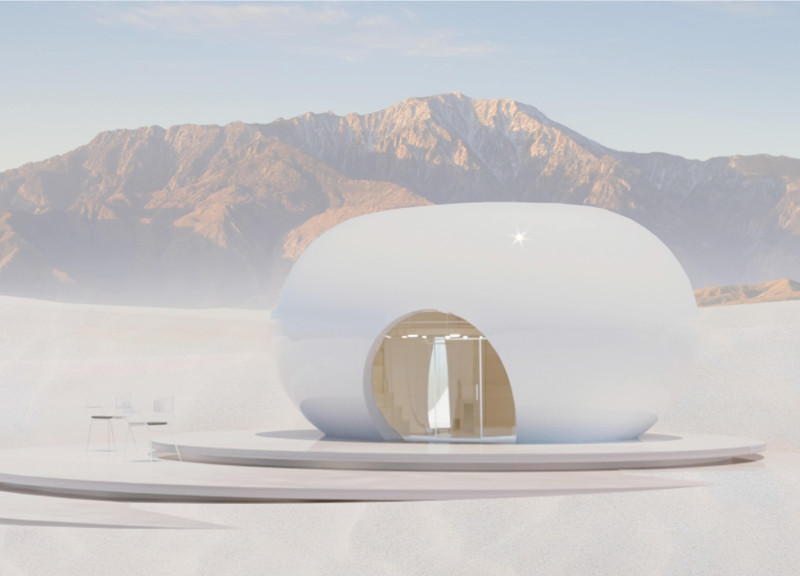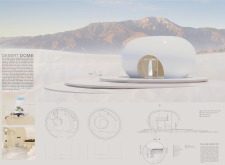5 key facts about this project
The Desert Dome in Palm Springs stands out as an innovative micro home that adapts to the challenging desert environment. The design focuses on sustainability and modern living while respecting traditional architectural forms. Designed to provide comfort and energy efficiency, it allows residents to enjoy the natural beauty of their surroundings.
Design and Materials
The structure is characterized by a shell made from a lattice of carbon-fiber-reinforced ABS, a lightweight and strong thermoplastic composite. This lattice is filled with closed-cell polyurethane foam, which enhances insulation and durability. Such material choices are strategic, ensuring that the micro home remains energy-efficient while providing shelter from the desert climate.
Spatial Organization
The spatial layout has been thoughtfully arranged to enhance functionality and user experience. Public areas are located on the ground floor, encouraging social gatherings, while private living spaces are positioned above. This arrangement provides a clear division between shared and personal spaces, allowing for a comfortable flow of movement throughout the home. The design caters to both entertaining guests and enjoying quieter moments.
The dome shape of the structure is significant. It minimizes the footprint while maximizing usable vertical space, allowing for creative utility concealment and efficient storage options. The height of the dome facilitates wide staircases and auditorium-style seating, merging aesthetic forms with practical use.
Interaction with Environment
Expansive terracing platforms elevate the building above the sand dunes, creating outdoor areas that enhance the connection to the desert landscape. This elevation enables residents to enjoy panoramic views and strengthens their relationship with the natural environment. It fosters an experience that invites exploration and relaxation amid the unique desert setting.
The use of 3D printing technology, referred to as Cellular Fabrication, allows for a distinctive approach to construction. This method creates open-cell matrices that can function as molds for traditional materials. This innovation results in structures that can be significantly stronger than standard construction techniques, supporting the aim of achieving net-zero energy consumption.
A key aspect of the Desert Dome is its ability to integrate modern technology with straightforward living principles. The design highlights a commitment to both functionality and a strong connection to its desert surroundings.



















































